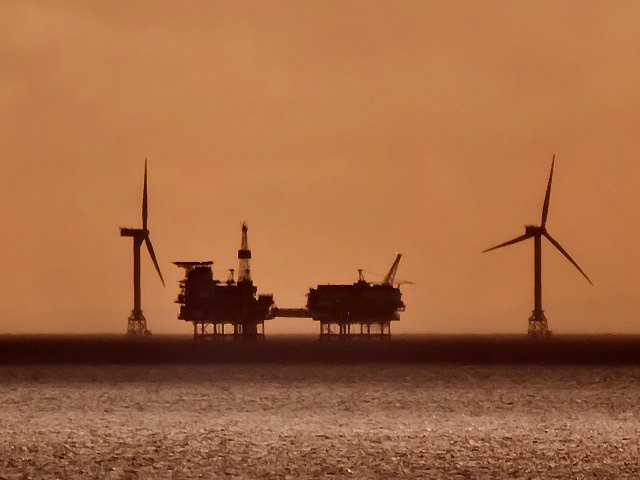
Since the start of the Covid-19 pandemic, the energy industry has had to face up to challenges that would have seemed unimaginable a few years ago.
But despite its holistic impact, a larger spectre looms.
Calls for governments to get on with battling climate change are becoming ever louder, and a drastic overhaul of the energy system is already in motion.
Given the societal drive for change, oil and gas companies now need to make “thoughtful choices” to improve their resilience – both economic and reputational – and to take advantage of the opportunities, McKinsey & Company has said.
The leading global management consultancy said there are “three key questions” that leaders of oil and gas companies should consider:
· How can we make our core hydrocarbon businesses more resilient?
· Should we expand into low-carbon businesses, and if so, how?
· How will our operating model need to change to flourish in a low-carbon world?
Reslience
Financial resilience is increasingly becoming a part of climate resilience as the risks to assets of climate change – whether that be through damage or changing consumer preferences – become more acute.
Investors have also started to “test the contribution” of the sector to climate change, with emissions monitoring an ever increasing practice.
Accordingly, McKinsey underlined that the first response from companies should be to build a portfolio that is resilient to “both lower commodity prices and higher carbon prices”.
In order to do this, leaders should concentrate on resources that are “advantaged”; those that offer the “best combination of lower break-even prices and lower emissions intensity”.
Actions can also be taken to bolster the financial and environmental resilience of assets, such as improving operating efficiency, capital discipline and decarbonising operations.
Without significant effort in these areas, McKinsey warns that opportunities for “profitable growth in the hydrocarbon sector will narrow”.
Moreover, by retiring the “least productive and most carbon intensive” assets, the performance and profitability of portfolios can improve.
Low Carbon Businesses
Driven by need as much as anything, many oil and gas companies are beginning to make significant low carbon plays.
Dramatic emissions reductions are needed and, to achieve this, so too is “enormous capital investment”.
According to research from McKinsey, $8.5 trillion is required alone to build the solar and wind capacity required from 2020 to 2030.
But the question is, will low-carbon markets offer returns comparable to the existing hydrocarbon core in oil and gas portfolios?
According to McKinsey, the pattern of returns across different energy sources has “shifted materially” over the past decade
The data supports several conclusions.
Firstly, projected returns in oil and gas have mirrored commodity prices in dropping materially recently.
Moreover, the “best-performing low-carbon companies” are now achieving comparable returns over their (lower) cost of capital versus their oil and gas peers.
But, as in all sectors, the range in returns between the best and worst players is far wider than the spread of average returns between sectors.
As such, McKinsey says companies should focus on the spread between return on invested capital (ROIC) and the cost of capital, not just the former.
How businesses play and perform is as important as the space in which they do it.
Operating Models
It’s clear that many oil and gas companies are working hard to update their strategies and shift their capital – but are they doing enough to change their operating models?
How firms should alter the way in which they function depends on what business they are trying to become – be it resource specialist, low-carbon pure play archetype or integrated energy player.
McKinsey says companies need to consider where they’re best suited to compete and, from there, they need to “reimagine their longstanding operating models” and forge “new capabilities, leadership, and cultures”.
Oil and gas players have an “abundance of capabilities” that may be valuable for “parts of a new low-carbon energy system”.
Therefore it is on leaders to “frame their strategic choices” around where to compete.
Hydrogen and carbon capture, utilisation and storage (CCUS) are a “natural extension” of current activities for companies – if the latter delivers attractive returns remains to be seen.
Renewables power generation represents the “largest scale opportunity” but it’s “unclear” whether oil and gas companies can emerge as winners.
What is obvious though is that hydrocarbon firms need to “quickly adapt their operating models” to build in “carbon management capabilities”.
Many uncertainties about the energy transition remain, but the end goal is clear.
Oil and gas companies have to “evolve their strategy” in different ways, based on their “starting point and aspirations”.
Chief executives must learn the lessons of economic history – “successful incumbents” can be “swept away” as the world enters a new dawn.
It’s a threefold challenge for oil and gas leaders; how to adapt, where to place bets and how to evolve companies.
Read McKinsey’s full paper entitled ‘The big choices for oil and gas in navigating the energy transition’ here.
